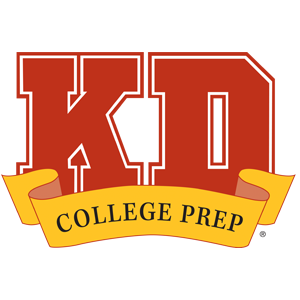It’s no mystery that some families struggle to afford the cost of a college education. For this reason, the U.S. government and many colleges provide financial aid and need-based scholarships to students who demonstrate financial need. Each year, the FAFSA® allows families to apply and see if they qualify for scholarships, grants, and special low-interest loans offered by the U.S. Department of Education.
Colleges and the U.S. Dept. of Education determine financial aid eligibility based on numerous factors. We highly recommend that families fill out the FAFSA to see if it helps reduce college costs. In this guide, we answer common questions about financial aid and go over what to expect from filling out the FAFSA.
FAFSA Overview
- Who should fill it out? Parents, this is your big moment to help your student in the college application process. At this point in the year, high school seniors are typically in the thick of college applications and extracurricular commitments. Parents can really take some pressure off a student by helping a student fill out this form, which mainly has to do with family income and tax information.
- What is it? The FAFSA stands for “Free Application for Federal Student Aid.” It’s a government form parents of high school seniors submit to help their students officially qualify for different types of aid from the U.S. federal government.
- When can I complete the form? In previous years, the FAFSA opened on Oct. 1st of each year. However, for the 2024-2025 aid year, the form will open on December 31, 2023. Read more about the new FAFSA form changes.
- Where? Families can complete the form online at studentaid.gov. Keep in mind that each Contributor (parent, guardian, etc.) will need to create their own FSA ID account to complete their portion of the process.
- How? Check out the resources on the FAFSA website to learn how to successfully complete the FAFSA form in a timely manner. There’s even a chat bot named Aidan to help guide you through the process!
- Why? Information from the FAFSA is used to determine whether you are eligible for student financial aid. In some cases, the FAFSA is also used to determine scholarship eligibility.
Types of Federal Financial Aid
Types of financial aid colleges offer students based on “Financial Need” calculated from FAFSA data include the following:
Federal Pell Grant
The Federal Pell Grant is for students whose need the government deems “exceptional”, and it does not require repayment. Based on the FAFSA, if your student is eligible for a Federal Pell Grant, he or she can receive that aid without worrying that funds in this program will run out.
Federal Supplemental Education Opportunity Grant (FSEOG)
FSEOG is an aid opportunity that some colleges have access to through the federal government. Participating schools receive a certain amount of this aid from the government, so once a school’s allotment is disbursed, there are no more funds even if a student might be eligible. This is one of the reasons it’s imperative to submit the FAFSA form as soon as possible and to apply early to colleges.
Loans
The U.S. Department of Education offers a variety of loans to students and their parents to help afford the cost of college.
- Direct Subsidized Loan: This is a government-sponsored loan, meaning that a student would be responsible for repaying the money plus interest on the money, which gets compounded into the loan if not paid regularly. The U.S. Dept. of Ed. awards these loans based on financial need.
- Direct Unsubsidized Loan: This is a government-sponsored loan in which eligibility is not based on financial need. However, the process for qualifying for this loan involves filling out the FAFSA form. Colleges will determine the amount for which you qualify.
- Direct PLUS Loans: These are additional government-sponsored loans available to students or their parents. Credit history is taken into consideration for this loan. Eligibility does not depend on financial need. However, you must fill out the FAFSA first before applying for this loan.
Keep in mind that government-sponsored student loans come with a lower interest rate than most private student loans. Because student loans are confusing and there are several different options, families should take them on with caution and after research.
Federal Work Study
This is a program allowing qualified students to work on or, in some cases, off campus for funds to be applied to education-related expenses. Funds for this program are finite, making it vital to apply to a college early to receive aid from the college’s federal work-study program.
Dates to Remember for 2024-2025 Aid Year
- FAFSA Open Date: Delayed open expected by December 31, 2023.
- College Deadline: Each college may have its own FAFSA priority deadlines that vary depending on when you apply. For example, the FAFSA deadline at Harvard University is February 1 for students applying with the Restrictive Early Action and Regular Decision deadlines for the 2024-2025 academic year.
- State Deadline: Many states have their own priority deadline as well. For example, the priority deadline for Texas is March 15, 2024.
- Federal Deadline: This is the deadline by which the federal government requires you to submit the form. It typically falls toward the end of the academic year for which you apply. The federal deadline for aid year 2024-2025 is June 30, 2025. We highly recommend that you don’t wait this long to submit your application.
As soon as the form becomes available (expected by December 31st), families of high school seniors should begin the process of filling out the data and submit it in a timely fashion to increase their chances of receiving federal aid before some of those resources run out.
Frequently Asked Questions
Are there requirements for filling out the form?
There are several items to report on the form including student dependency status, parent information including earnings and savings, family social security numbers, data from the IRS (which can be accessed through an IRS Data Retrieval Tool), reports of any student income, parent assets, etc. In short, this consists of information to which parents have easier access. Luckily, the new integration with the IRS will help streamline the process and has significantly cut down on the number of questions asked.
Who qualifies for FAFSA money?
Who might qualify for federal aid or aid money from colleges depends on circumstances unique to each college applicant. Unfortunately, there isn’t just one answer or a simple chart based on what parents earn. The FAFSA exists to help families source college funds by providing colleges with data points for each student and by connecting families with federal aid when applicable.
Some basic requirements for federal financial aid include high school graduation or GED certificate, acceptance to college, and having a valid Social Security number along with some additional documentation.
Most non-U.S. citizens will not qualify for financial aid provided by the U.S. Dept. of Education. However, certain circumstances could categorize you as an “eligible noncitizen.” With the new FAFSA changes, you can now sign up for a FSA ID account if you don’t have a social security number.
Is FAFSA free money?
The FAFSA is not purely a formula for whether you qualify for scholarships or grants (which would, in fact, be funds that do not require repayment). The U.S. government and colleges use the FAFSA to assess your eligibility for supplementing your Student Aid Index (SAI) with several types of aid—some of which require repayment. You have to read aid offers from colleges carefully.
What’s the difference between the FAFSA and CSS Profile?
The CSS Profile is another application similar to the FAFSA that families can fill out. It is offered through the College Board®. The information required for this form is similar to that which you entered on the FAFSA, though the CSS Profile is more detailed. For example, the CSS Profile also considers the value of a family’s home as an asset, while the FAFSA considers real estate holdings other than a family’s home. Many colleges use the CSS Profile to calculate a student’s qualifications for non-federal aid. In other words, aid students can receive directly from the college.
Like the FAFSA, the CSS Profile becomes available to fill out starting October 1st of each year. Unlike the FAFSA, the CSS Profile has a cost to submit. The CSS’s cost is $25 for the first school and $16 for each additional school. You may qualify for a fee waiver if your family’s gross income is below $100,000 or you already qualify for a fee waiver for the SAT test. The CSS Profile also requires data from both living parents regardless of marital or custody status.
Approximately, 250 schools across the country require submission of the CSS Profile, primarily private schools and many top-ranking colleges. The good news is that there are quite a few similarities between the FAFSA and the CSS Profile. Once you’ve gathered the data and documents for one, you have them ready for the other.
What about merit-based aid?
Some colleges seek to attract top-performing students by awarding aid in the form of scholarships, tuition discounts, fee waivers, stipends, or other forms. Eligibility is based on a student’s transcript data (e.g. GPA or class rank) and standardized test scores (e.g. SAT® or ACT® test). Each college varies in the amount of money set aside for merit-based aid, and this aid can run out. This is another reason why applying early is very important if you need financial aid.
Keep in mind that the Ivy League and other very selective institutions do not offer merit-based aid. This is often due to the fact that they do not need to incentivize high-performing students to apply. Typically, highly selective colleges consider need-based aid only. For highly selective colleges, merit is what can help you get in, while financial need can help you with options for how to pay.
The U.S. government requires all universities to provide prospective students a tool on their websites to calculate broadly what amount their family might be expected to pay to attend. This tool is called the Net Price Calculator. If you search for the name of a college and “Net Price Calculator” you can quickly find the page. Here, you will fill out some basic family income information alongside GPA and test scores.
How is financial aid determined?
Colleges calculate financial aid by looking at two main factors: Cost of Attendance (COA) and Student Aid Index (SAI). COA is the estimate of how much money a student would need to pay tuition and support herself at a particular college for one year. SAI, formerly called “Expected Family Contribution”, is the number colleges calculate using information from the FAFSA form to estimate what dollar amount they believe a family can contribute monetarily for the student to attend college.
Colleges take your COA and subtract it from the SAI. What’s left is officially called the “financial need” of a student over the course of that one year. Schools will then offer options for meeting that calculated need.
How much financial aid can I get?
How much financial aid for which you qualify depends on several data points colleges need from the FAFSA to give an official number to your “Financial Need.” For any college on your list, make sure to find its “Net Price Calculator” to get a general estimate on merit (if applicable) and need-based aid your family may receive upon acceptance into the university.
When should you complete the FAFSA?
The FAFSA historically has opened on October 1st of each year, but this year it’s different because of the FAFSA Simplification Act. Often, there are benefits to applying as early as possible. There are multiple types of deadlines listed on the student aid website, so remember to do your research and plan ahead.
How do I fill out the FAFSA form?
The student aid website includes a FAFSA checklist that details everything needed to fill out the form. It lists the following:
- Student Social Security Number (if you have one)
- Parents’ Social Security Number (if you’re a dependent)
Tax returns (2022) - Records of child support received
- Current balances of cash, savings, and checking accounts
- Net worth of investments, businesses, and farms
- Contributor personal information: Name, date of birth, email addresses, and social security number
What if I don’t think I qualify?
You should still submit the FAFSA form even if you doubt that you will qualify for much need-based aid. First of all there is no downside for chances of admission when applicants submit the FAFSA. Secondly, a student might qualify for aid that he or she didn’t know about.
To qualify for merit based financial aid like scholarships, you need to complete FAFSA as well. Colleges take your family’s financial situation from the form into account, including how many other dependents your family supports. The FAFSA gives colleges information to compare your family’s financial need with those of others. This allows colleges to offer available funds to qualified applicants.
Need help preparing for college applications?
At KD College Prep, we offer a variety of test prep and college counseling programs to help students reach their college admissions and scholarship goals.














































